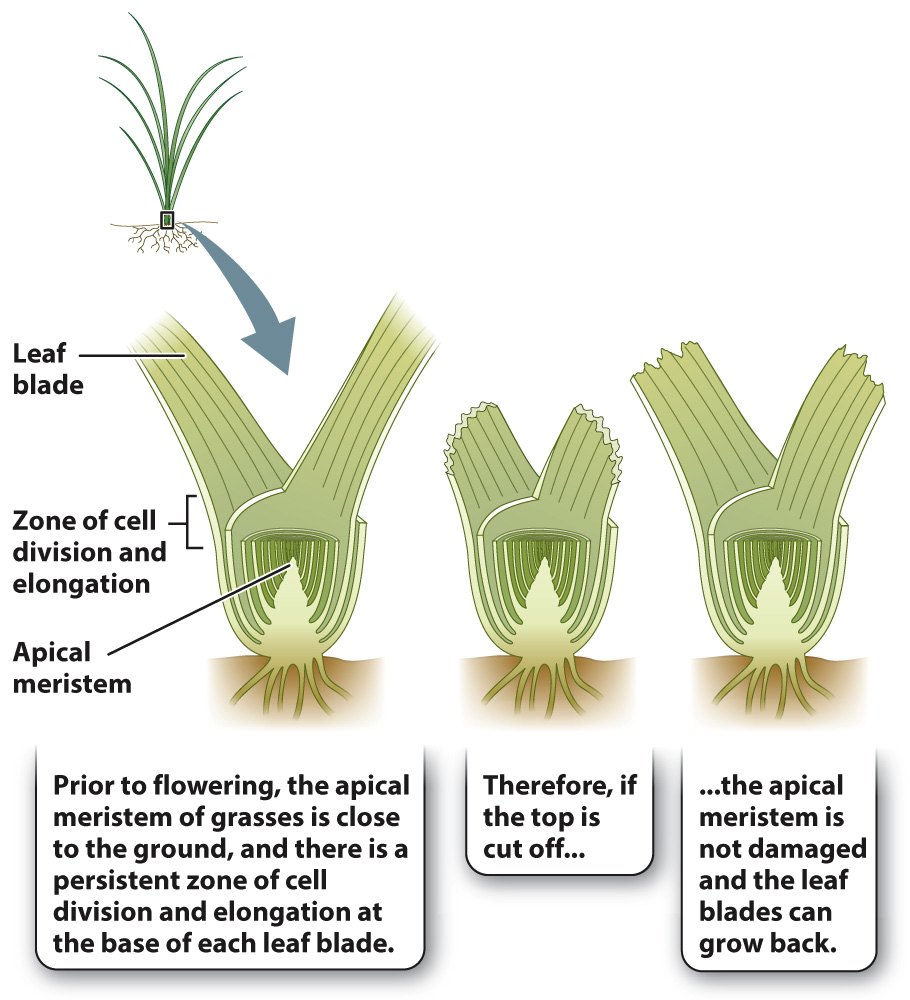Grasses can regrow quickly following grazing by mammals.
By far, the most important vertebrate herbivores are the bison, zebra, antelope, and their relatives that populate the great plains of East Africa and North America. Studies of herbivore damage in an East African savanna indicate that vertebrates annually consume approximately the same amount of leaf biomass as do insects.
Grasses are well adapted to cope with grazing mammals (Fig. 32.14). The vertically oriented leaves grow from stems with limited internodal elongation. This allows the shoot apical meristem to remain close to the ground, where it is less likely to be damaged. Grasses have persistent zones of cell division and elongation at the base of each leaf. Because grass leaves elongate from their base, grasses can quickly replace leaf tissues removed by a grazing mammal, fire, or a lawn mower. Only when grasses produce their flowering stalks does the apical meristem emerge above the leaves.

FIG. 32.14 Adaptation for grazing. The ability of grass leaves to elongate from the base allows grasses to regrow following grazing.
Grasses are thought to have evolved in forest environments. In fact, grass-dominated ecosystems have become widespread only during the past 25 million years. The fossil record shows that as grasslands expanded, grazing mammals evolved along with them. Horses, for example, originated as small browsers that fed on the leaves of small trees and shrubs. As grasslands expanded, larger horse species with teeth adapted to eating grass evolved. Why would specialized teeth be advantageous? The small plates of silica in grass cell walls increases their strength and may provide mechanical defense against herbivores. Horses and other grazers that feed on these grasses wear down their tooth enamel grinding against the silica, so teeth with a thick enamel layer are favored by natural selection. It is not clear whether grasses evolved in response to grazing or to disturbances such as fire, but without question, their distinctive pattern of meristem activity minimizes the damage caused by grazing mammals.
Page 679
